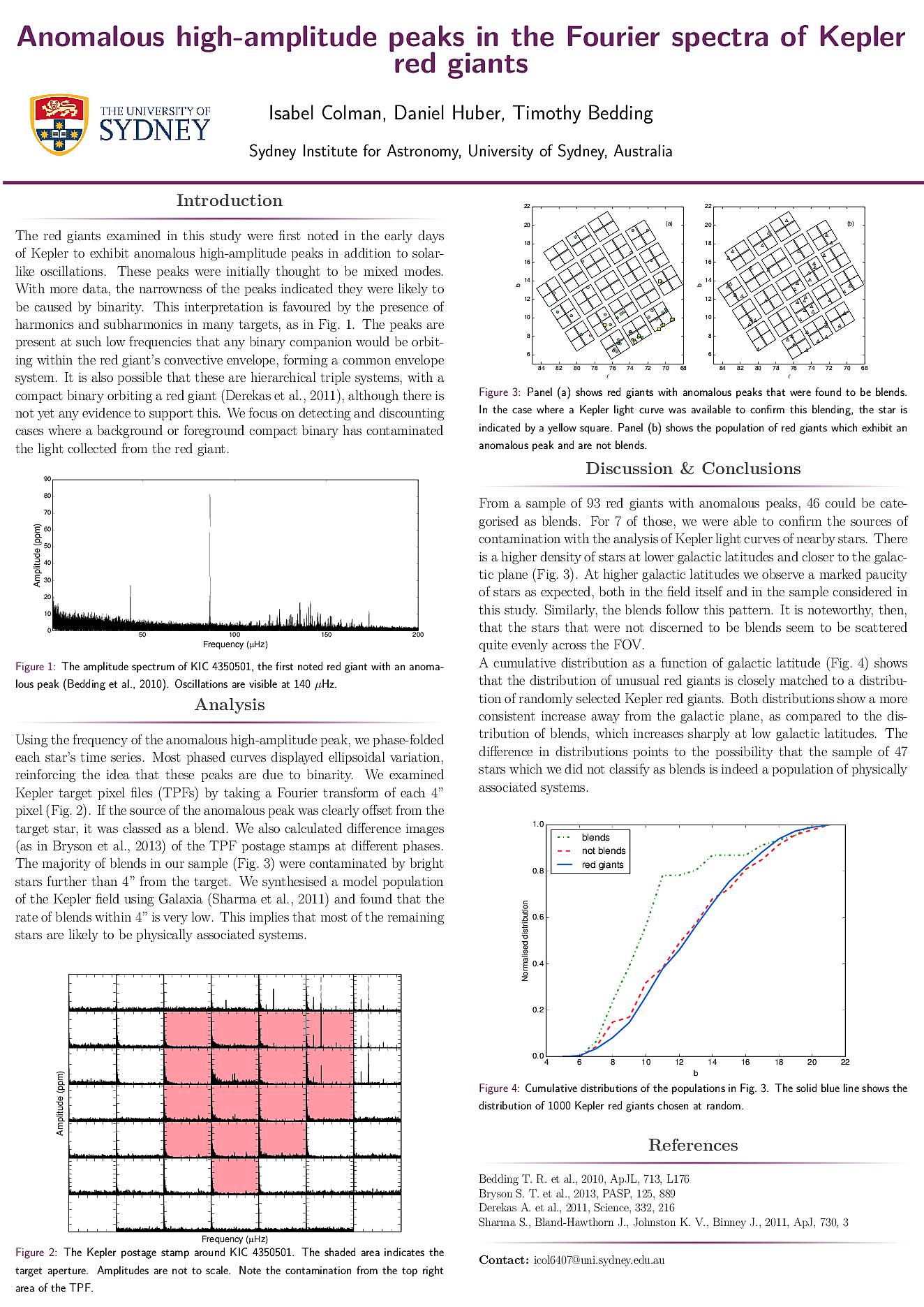Main category
Natural Sciences (Astrophysics and Astrononmy)
Abstract
We present an analysis of 93 oscillating red giants from NASA's Kepler mission which exhibit anomalous single-frequency peaks in their amplitude spectra. These peaks may be indicative of binary star systems, with frequencies such that the companion star's orbit would be within the red giant's convective envelope. Alternatively, the observed phenomenon may be due to a close binary orbiting a red giant in a triple system, or binary systems contaminating the pixels around the target star. We eliminate 46 stars in the sample as blends. However, we find that in 47 cases the anomalous peaks are indistinguishable from the target star to within a resolution of 4", the size of a Kepler pixel. This suggests that we are either observing contamination by a line-of-sight background or foreground binary system, or a physical association. We examine a Galaxia model of the Kepler field of view to estimate background star counts and find that it is highly unlikely that all targets can be explained by chance alignments. From this, we conclude that these stars may comprise a population of physically associated systems.
Do you have problems viewing the pdf-file? Download poster
here
If the poster contains inappropriate content, please
report the poster. You will be redirected to the landing page.
